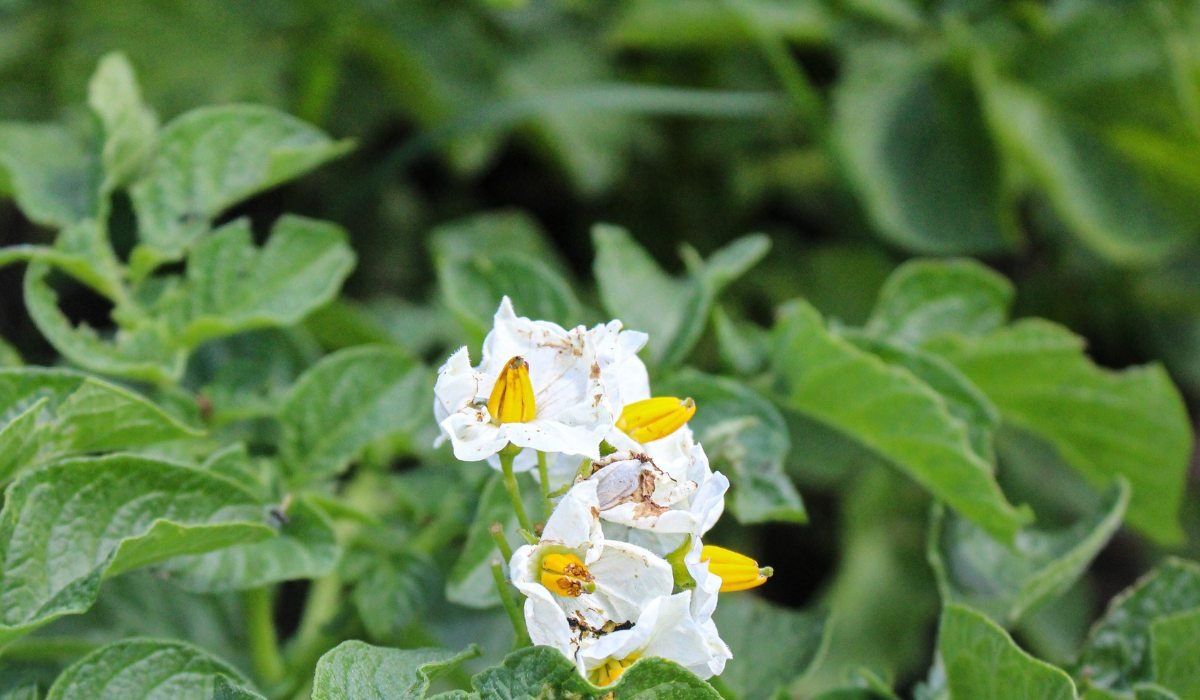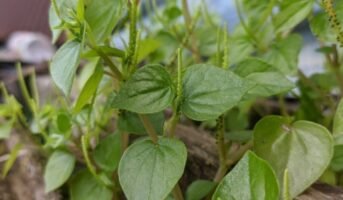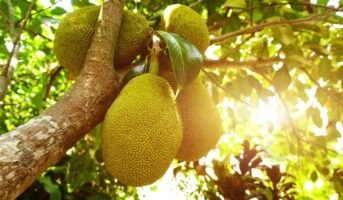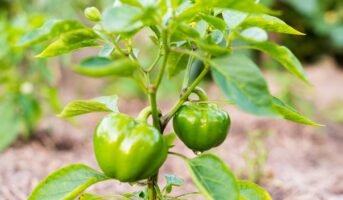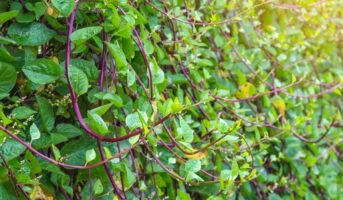Potatoes are a tuberous crop grown worldwide. They are grown in greenhouses, on farms, and in gardens. Potatoes are tubers that live underground and form lateral shoots that sprout above the soil surface.
The potato plant (Solanum tuberosum) is a perennial, meaning it will grow and bloom again each year. You can harvest potatoes from the plant once it has been established in your garden. You’ll be able to harvest potatoes at least twice a year if you allow the plant to mature fully before cutting it back.

Source: Pinterest
see also: Tecoma capensis
Potato plant: Quick facts
| Plant name | Potato plant |
|---|---|
| Botanical name | Solanum tuberosum |
| Genus | Solanum |
| Kingdom | Plantae |
| Clade | Tracheophytes |
| Order | Solanales |
| Family | Solanaceae |
| Life Cycle | Perennial |
| Cultivation | South America, Asia |
| Benefits | Can be eaten as vegetables and made into medicines |
Known about: Digitaria Ciliaris
Potato plant: Physical description
- There are unequal sized, and shaped leaflets on the potato plant’s alternately arranged leaves, which have a branched stem.
- Leaves can reach a length of 10–30 cm (4–12 in) and a width of 5–15 cm (2–6 in) with oval or oblong leaflets.
- Potato tubers are generally located in the top 25 cm (10 in) of the soil, and they produce white or blue flowers and yellow-green berries.
- Depending on the variety, potatoes can have yellow, red, or purple tubers. They have grown annually and can reach heights of over 1 m (3.3 ft).
See also: All about India’s National Tree- Banyan
Potato plant: How to propagate
Potato plants can be propagated by seeds or by cuttings. Seeds are the easiest way to propagate potatoes, but they require a great deal of care. And some varieties may not produce enough viable seeds to keep up with the need for new plants.
By cuttings
Cuttings are a good choice if you want to propagate potatoes quickly. The best time for taking cuttings is in spring. When the plant has gone dormant and is ready for transplanting into pots. Cuttings should be taken from healthy, mature plants that have been grown from seedlings or purchased from a nursery.
You can take cuttings at any point in the season. But choose the right time for your climate.For example, if you live in an area where summer temperatures are high and fall frost dates are short. Taking cuttings in late summer won’t provide much benefit because it will take too long before they can be transplanted into their final containers. When propagating potato plants, be sure to only do so in the spring or fall. This lets the plant develop before winter comes. But it’s also important for the plant to get enough nutrients during its early growth stages.
If you’re going to propagate your potato plant. Use a sterile knife or pruning shears to cut off the top half of the plant just below where it meets the soil. Be sure not to damage any roots or stems while making this cut. As they will help keep your new plant alive after it’s planted.
Place your new plant in a large container filled with potting soil. And water it until it feels completely saturated, about an inch below its surface. Place the pot in a sunny location out of direct sunlight for at least one month before planting.
By seeds
In early spring, seeds can be planted 0–2 weeks after the last frost, given that a frost will kill them. Plant potatoes in hilly rows after preparing the soil with compost or manure.
After adding compost or manure, dig shallow trenches (2-3 ft) apart and plant seeds 30 cm (12 in) apart, covering them with 7.5 cm (3 in) of soil. Plants should be covered with soil up to about half their height when they reach 25 cm (10 in) in height. Mound the soil again after the plants have grown another 25 cm (10 in) to prevent shallow tubers from turning green.
The process should be repeated throughout the growth cycle of the crops. Straw can be used around the plants instead of soil to avoid digging for tubers. But straw must be replenished regularly as it will decompose.
After a potato plant has bloomed, tubers are usually harvested about 2–3 weeks after they reach maturity, depending on the variety. Your tubers should be harvested after the vines have died or before a frost kills them.
known about Sweet Potato Plant
Potato plant: Maintenance tips
Maintaining a potato plant is easy, and here are some tips to keep your potato garden going strong.
Add organic matter to the soil every spring and summer. This will help you grow bigger potatoes, which leads to more potatoes per plant.
Plant in full sun, but if you have a small garden space, try planting in partial shade. Potato plants grow well in sunny areas with well-drained soil.
Water regularly, don’t wait for the plant to tell you it needs water. A dry root system can cause damage or even death to the plant. They need consistent water to thrive, and they do require normal sunlight.
Keep the soil moist but not soggy. A good practice is to keep it bone dry without standing water. So that it doesn’t drown out the roots on the bottom of your pot or container. Which are essential for growing healthy potatoes. A wet root system won’t produce good results either.
When harvesting your potatoes, leave them in their containers until they’re completely brown. And crispy-looking on top before removing them from their containers and washing them off under running water. And be careful not to let any dirt fall into your sink.
Their roots can spread up to two feet underground. So they require space that isn’t crowded with other plants. Potato plants also need regular fertilisation with compost or manure to grow healthy tubers.
Potato plant: Caring tips
Propagating potato plants is a great way to expand your potato garden and ensure that you have plenty of potatoes for harvest. While propagating is easy, there are some important things to keep in mind when propagating potato plants.
Potatoes grow best in cold weather and produce well when grown in areas with cool summers and mild winters. And they need good drainage and fertile soil.
The potato plant is generally grown from seedlings which take 10 to 14 days to germinate.
Mature tubers should not be harvested until they have remained in the ground for at least four weeks after forming their eyes. Potatoes can be harvested at any stage of growth except fully mature tubers.
After harvesting, the potatoes are stored in a cool, dry place for later use or can be used immediately. After cooking or freezing them into their respective types of products such as french fries, chips, mashed potatoes and so on. Potatoes can be harvested as soon as they sprout from their seeds, but it is best to wait until they are larger than half their size before harvesting them. Once cut, potatoes should be left in the ground for about 3 weeks before being dug up and stored in an airtight container or cool place such as a root cellar.
Potatoes are ready to be consumed when they are 1/4-inch across or smaller. But not until all traces of green have vanished from their skin.
Potato plant: Uses
- Potatoes are plants, and the fleshy part of their root is often eaten as a vegetable.
- Even though potatoes are commonly used for diabetes, heart disease, high blood pressure, indigestion (dyspepsia), and other conditions, there is no good scientific evidence to back up these claims.
- In addition to treating stomach disorders, raw potato juice is also used to treat water retention (oedema).
- Weight loss is achieved by mixing potato protein powder with water and controlling appetite.
- People apply raw potatoes directly to sore eyes, boils, burns, arthritis, and infections.
- Potatoes are used as sources of starch as well as fermented into alcohol.
Potato plant: Economic importance
- Farmers in the highlands produce 60% of the crop, which is a staple food and a source of income for them.
- There are several industrial uses for potatoes, including starch production and alcohol production. In textile mills, potato starch is used to size yarn, while dextrin and glucose are also produced from potatoes.
- Approximately hundreds of thousands of jobs will be generated directly and indirectly as a result of U.S. potato production in 2021. Commercially grown potatoes in nearly every state are primarily produced by multi-generational family farms, unlike most speciality crops.
- Potatoes are one of America’s largest agricultural exports, contributing to world food security, with one out of five rows going overseas.
Potato plant: Toxicity

Source: Pinterest
Never consume potatoes that are spoiled or green beneath the skin. Potent toxins are found throughout the plant, especially in green potatoes and new sprouts. Remove any sprouts from potato skins before eating them. Only potatoes without green skins and sprouts should be eaten.
FAQs:
How do potato plants survive?
The most suitable soil for growing potatoes is light, loose, and well-drained, as they are aggressively rooting plants.
What is the most effective way to protect my potato plants?
Plant potatoes on different plots of land every four years. Earthing up and rotating may help protect tubers.
Housing News Desk is the news desk of leading online real estate portal, Housing.com. Housing News Desk focuses on a variety of topics such as real estate laws, taxes, current news, property trends, home loans, rentals, décor, green homes, home improvement, etc. The main objective of the news desk, is to cover the real estate sector from the perspective of providing information that is useful to the end-user.
Facebook: https://www.facebook.com/housing.com/
Twitter: https://twitter.com/Housing
Email: [email protected]
